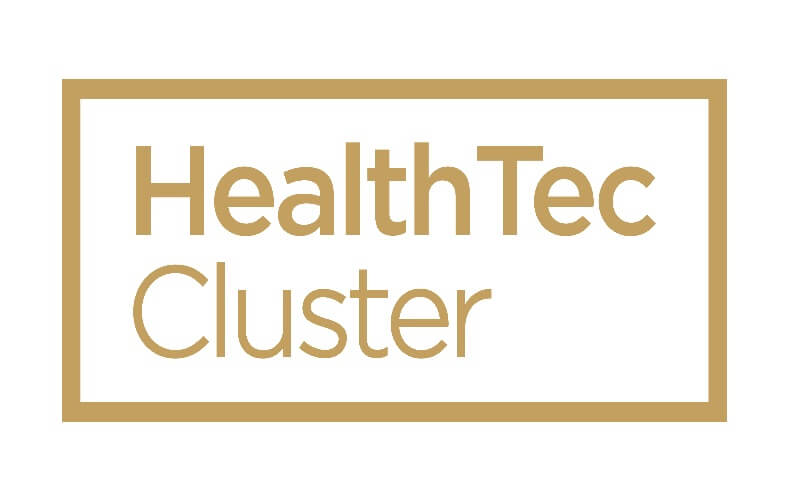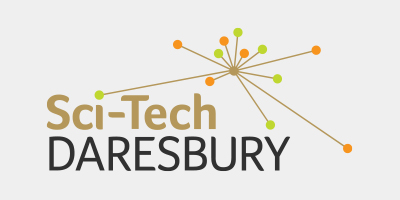June 27, 2019
The HealthTec Cluster – connecting capabilities
Standing still is never an option when it comes to healthcare. Innovation in medicines, equipment and procedures is an ongoing affair.

The world is full of companies coming up with potential, life-changing solutions but reaching the healthcare sector can be an arduous, costly and ultimately frustrating path.
Having the right connections who can offer support, guidance, open doors and even source finance increases the chances of those innovations becoming reality. The HealthTec Cluster, recently launched in the North West is purposely looking to provide that pivotal support and connections for companies across the region.
It has been developed over the past year through connecting together a wide variety of stakeholders – including its founding partners the Science and Technology Facilities Council (STFC) and Innovation Agency and improving the understanding of the region and the unique capabilities each stakeholder has to offer to innovators & industry.
Led by Dr Phil Carvil, the ethos of the HealthTec Cluster is ‘connecting capabilities’ and bringing together these stakeholders that can support both each other and the innovators on their journeys.
Dr Carvil, who has overseen the project, explained the work of the new cluster and the role it will play in facilitating businesses looking to bring innovation to the healthcare sector.
What does the cluster do?
Its purpose is to help with the building of collaborations and the development of innovation by working with stakeholders who already operate to support innovators. From businesses, academics, clinicians and elsewhere, innovation can come in different forms or even sectors thereby requiring different guidance, support and networks at different times. By having this rich stakeholder network it both increases the diversity of the accessible capabilities for innovators and upskills the stakeholders on the wider ecosystem and who they can contact with to access these capabilities.
There are already over 40 stakeholders in the cluster. There are local, regional and national bodies that work with innovators and industry at different part of the journey. This could be in accessing grants to fund an R&D project, or understanding what clinical evidence is required for a new product/service by engaging NICE, or finding a forum to engage clinical thought leaders such as the Royal College of Physicians.
By joining the stakeholders together, working with places of innovation including growth hubs and science campuses, the benefits of these connections and unique capabilities are better translated and the opportunity for collaboration increased. This can be incredibly powerful particularly when corralling significant partnerships together for large scale projects such as responding to the industrial strategy grand challenges.
What support is there?
When I get asked what support is there for innovators (this could be from a clinical entrepreneur, a start-up, established business or a company expanding in the UK) – I like to first take a step back and ask to have a call and/or invite them for a coffee and informal conversation.
It is first about understanding more about them & their current innovation process. This can then help to ask better questions and suggestions as to what support might be additive for them – otherwise it can feel like a tidal wave of acronyms and people to talk too.
Particularly if you are starting out it can feel incredibly lonely – so what has been helpful has been having events to connect companies to other companies to share their growth journeys (and growing pains) and understanding what support has benefited them.
The support that is there is through the connections in that stakeholder community. The organisations in there have expertise in many different areas. For example, at STFC, companies can access funding streams to work with our national laboratories on technical process issues they may be experiencing e.g. understanding where machine learning could optimise a data process. We have a dedicated fund called Bridging for Innovators for this.
It might be a company has a spinout idea that leverages space technology in a way to solve a health challenge and would like to apply to the European Space Agency Incubation Centre to develop it further. We can help with those connections and introductions.
Funding and understanding about the current and future opportunities is also key. We work with stakeholders in the cluster like the Knowledge Transfer Network, Innovate UK and the National Institute of Health Research to promote these opportunities as well as identify connections that can be made. It might also be a company is looking at investment, so having established, trusted memberships networks like Bionow, Medilink and ABHI, the local enterprise partnerships in the region and campuses such as Sci-Tech Daresbury can really allow more rapid connections to investors and financial services but also to those who could advise a company on the types of funding out there and preparation process.
How do you work with the NHS?
The NHS is a brilliant and extremely large organisation, the largest in Europe, and that makes it very unique. It is also very complex especially when looking get innovation into it. Several of the stakeholders involved work with hospitals and businesses to enable companies to understand the landscape. These events are about building relationships with the health system and discovering how your innovation could help them and how that will also benefit patients.
For instance, if a business has an existing innovation that is close to market and would like to bring it in front of the health service, they can contact their local Academic Health Science Network (AHSN). There are 15 spread across the regions of England, helping to spread innovation and work with the health system. In the North West there are two; The Innovation Agency (The North West Coast AHSN) and Health Innovation Manchester an academic health science system. Each works with the hospitals, universities and wider ecosystem to support health innovation. Through being in contact with the AHSN’s and them knowing more about your product can greatly accelerate connections. If you had created a paediatric device for example, The Innovation Agency team might work with you and colleagues at Alder Hey Children’s Hospital to explore opportunities.
It is also important that this flows both ways, and we work with bodies to support clinical entrepreneurs and clinical feedback on innovations as well as system leaders with expressing what solutions they are looking for and better understanding what barriers exist. We all want to create the best health system possible – and for this collaboration is and always has been key.
There is also the fact, that the NHS might not actually be the market for the product. So, what other markets are there? Have these businesses considered all the options, including exporting and working with the Department of International Trade? This is something we can assist with exploring.
There is another HealthTec Cluster in Harwell, Oxfordshire. Are there any benefits from the link?
Having Harwell in the Oxfordshire region and the wider Thames Valley as a sister cluster is incredibly beneficial and unique. Both campuses and clusters bring a wealth of complimentary capabilities and learnings both of what has and has not worked. It provides another regional area that businesses can explore through an easy mechanism which maybe they hadn’t considered or had the opportunity. This is where ‘connecting capabilities’ comes to the fore – and this is what HealthTec clusters offer.
To find out more about the HealthTec Cluster contact Phil Carvil at STFC.



